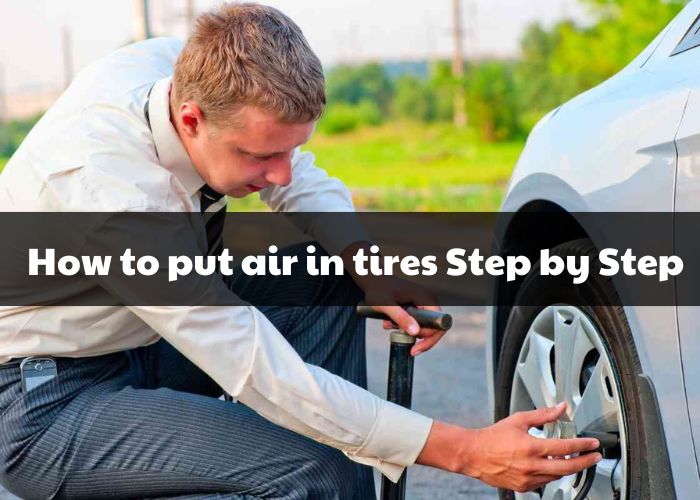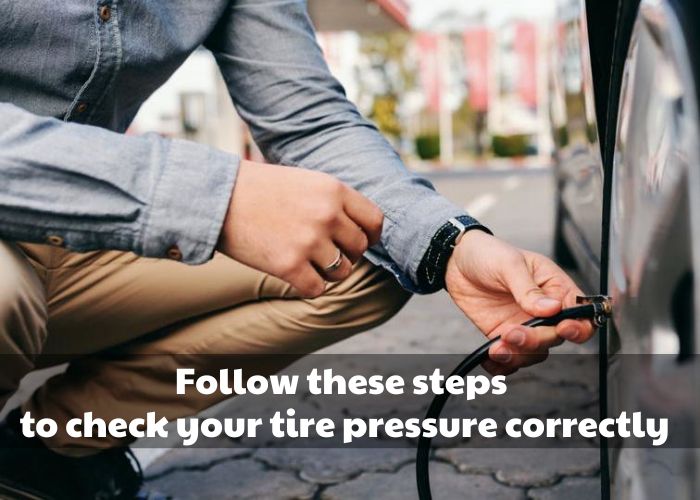How to put air in tires, see our details for information.
Maintaining the proper inflation of your car tires is crucial for optimal vehicle performance and your safety on Dayton roads. Not only does it help maximize fuel efficiency, but it also ensures that your rides are smoother and your car handles better.
The service team at Brad’s Car Tunes understands the importance of proper car tire pressure and is here to help. In fact, the National Highway Traffic Safety Administration (NHTSA) warns against driving with under-inflated tires as it can lead to decreased fuel efficiency, handling issues, and even impact-crash avoidance problems.
To avoid these issues and maintain your vehicle’s overall health, take advantage of Brad’s Car Tunes’ free monthly air check. With our help, you can keep your tires running at their best and travel safely and securely on the road. So, don’t hesitate, schedule your appointment today!
How to put air in tires: Step-by-Step Guide
Adding air to your tires can be a quick and easy process, whether you’re at home or at a gas station. Here’s what you need to know:
- Check your tire pressure: To ensure accuracy, perform this step in the morning or when the tires are cold. Use a tire pressure gauge, which typically resembles a metallic pencil with a sliding measuring device on one end and a tire valve connection on the other.

Park your car in a suitable location: Whether you’re at a gas station or home, make sure you can comfortably access all four tires with the air hose.
Remove the tire valve cap: Keep it in your pocket to avoid misplacing it.
Firmly attach the compressor fitting to the tire valve stem: Begin inflating the tire, listening for the sound of air entering. If you detect air leaking, readjust the connection between the air nozzle and the valve stem.
Add air for a few seconds: It’s important to note that not all air compressors inflate at the same rate. Therefore, regularly inflate and check the tire pressure. Add air as necessary. To release air, press the center pin located inside the tire valve.
Replace the valve cap: This helps maintain proper tire pressure for an extended period and prevents road debris from entering the valve.

Bonus Tip: In case of an emergency or if an air compressor is unavailable, a bicycle pump can serve as a temporary solution. However, be aware that it may require significant effort and could potentially damage the bicycle pump.
How Much Air Should I Put in My Tires?
Drivers often visit our service center with the common question, “How much air should I put in my tires?” To determine the appropriate tire pressure, check for a sticker on the driver’s side door or refer to your owner’s manual. Typically, the recommended car tire pressure is around 32 to 35 psi when cold. Here are some key considerations when inflating your tires:
- Avoid inflating to the numbers on the tire itself, as these indicate the maximum pressure capacity, not the ideal fill level.
- Maintaining proper tire inflation is crucial to prevent premature wear and costly replacements.
- Excessive tire pressure can result in poor handling and an unusually bumpy ride. If this occurs, release some air until the desired comfort is achieved.
Improving Tire Pressure Maintenance
It’s important to regularly check your tire pressure to ensure optimal performance. On average, tires can lose one pound of pressure per month, and these small reductions can have a significant impact over time. For hassle-free tire inspections and inflation, visit your local Les Schwab.
Driving with Low Air Pressure
While releasing some pressure can enhance grip in deep snow, it’s generally not recommended to drive with low air pressure. Doing so can lead to irreparable damage or tire failure. If you find yourself with a flat and unable to immediately fill your tires, it’s advisable to switch to your spare and promptly visit Brad’s Car Tunes for assistance. If your vehicle has run-flat tires, they offer some temporary relief in case of a flat or slight air pressure reduction.
Related Post:
Conclusion: How to Put Air in Your Tires
Now that you know how to put air in tires, you can rest assured that your vehicle is safe and road worthy. It’s important to check the pressure of all four tires at least once a month and increase the amount of air if necessary.
Thanks for reading this blog post! We hope you found this information helpful – if so, please share it with your friends or family who might benefit from knowing how to properly maintain their vehicles!


I’m Timothy Ballard, owner of a used car dealership in Springfield. I love just about everything automotive, but I have a special place in my heart for trucks. I’m an ASE Certified Master Technician, so I know my way around a car. In my spare time, I enjoy traveling with my family and hiking new trails.

I have a 1995 Honda Accord and I’m new to taking care of cars. My dad advised me to inflate the tires to 32 lbs of air, particularly the front ones, but I’m unsure about the process and what to expect. Any guidance would be greatly appreciated. Thank you!